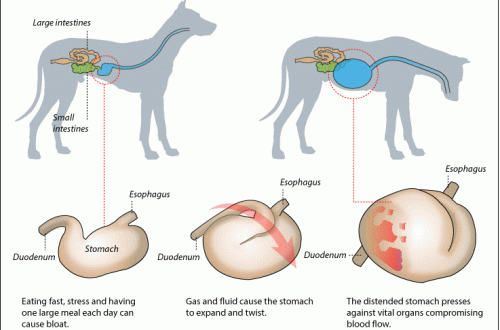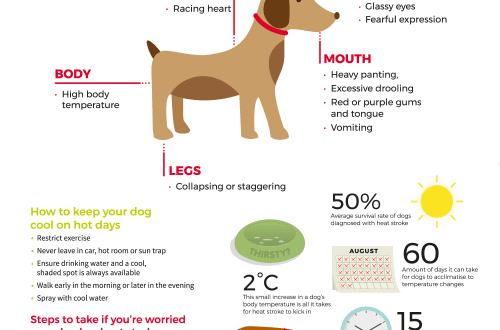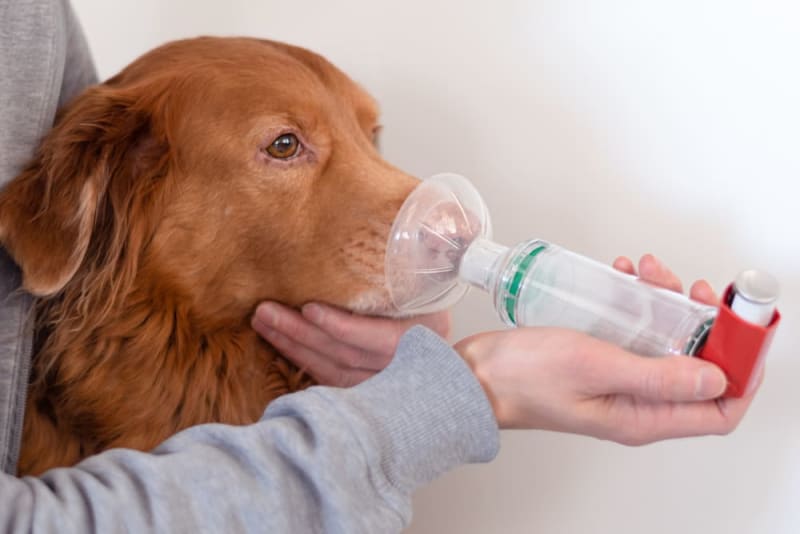
Asma dina anjing

Bronchial asthma in dogs is a chronic inflammatory disease of the respiratory tract, which, unfortunately, is becoming more common in dogs every year. Asthma in dogs is manifested by episodes of labored breathing accompanied by coughing and/or choking attacks due to narrowing of the airway. Unfortunately, often the owners do not pay attention to the early signs of the disease and go to the clinic with an already seriously ill pet. While when detected in the early stages and prescribing appropriate treatment, most owners manage to achieve stable control over the pet’s disease and maintain a satisfactory quality of life for companion dogs, and for working and service dogs – working capacity.

In this article, we will analyze the causes, symptoms, diagnosis, treatment and prognosis in dogs with bronchial asthma.
Nyababkeun Asma
Asthma in dogs is a chronic allergic disease. There are many possible causes that can lead to this disease, but, unfortunately, a specific cause can rarely be determined.
In any case, if your pet has been diagnosed with asthma, you need to pay attention to the following aspects of keeping a pet:
- household chemicals (floor cleaners, air fresheners, various aerosols, deodorants);
- washing powders, which are used to wash the bedding on which the dog sleeps, his overalls (and your bedding, if the dog sleeps with you);
- dust is a powerful allergen;
- smoke from cigarettes;
- flowering house plants;
- other possible air pollutants.
It is believed that allergies can occur to feathers, carpet pile, hair from other animal species, etc. It is not uncommon for asthma to develop during apartment renovations.
As a result of the action of the allergen, recurring inflammation of the airways develops. Frequent inflammation is accompanied by a change in the epithelium of the walls of the trachea and bronchi. Increased mucus production. The result is airway constriction, increased pulmonary resistance, and reduced exhaled air, and the dog exhibits clinical symptoms of asthma. The cause of asthma attacks in dogs is acute respiratory failure.
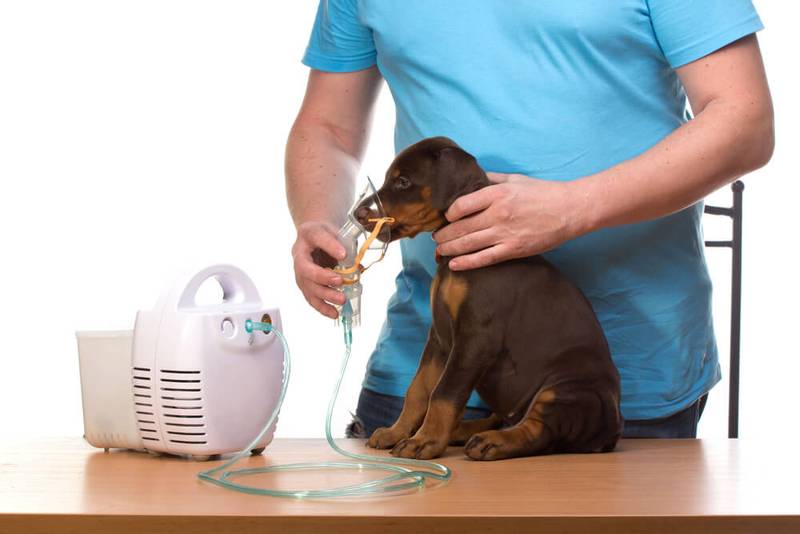
But why does asthma develop in response to the action of an allergen only in a small percentage of dogs, while the rest of the pets, other things being equal, do not start to get sick? There is still no answer to this question. It is believed that the genetic factor matters. Age and gender are not predisposing factors. However, young animals are more likely to develop respiratory infections, provoking manifestations of pre-existing obstructive bronchial disease. Mostly symptoms appear in middle-aged and senile dogs.
It should be noted that risk factors for the development of this disease include repeated bacterial infections, prolonged inhalation of irritants, and excess weight.
Asthma Symptoms in Dogs
The main symptom of asthma in dogs is an occasional cough. The cough is usually dry, and post-cough vomiting is also characteristic of asthma. Other symptoms in dogs may include:
- léak;
- serangan asma;
- kantuk;
- presence of wheezing;
- pangjurung utah;
- intolerance to physical activity;
- Some pets may faint.

The above clinical manifestations are due to impaired airway patency due to a complex of factors: increased mucus production, mucosal edema and spasm of bronchial smooth muscles. Also, the cause of coughing may be irritation of the respiratory tract receptors due to inflammation or spasm. In addition to the main manifestations of asthma itself, the disease, due to a lack of oxygen supply to the body, can lead to a complication in the form of cardiovascular insufficiency, which can be manifested by shortness of breath, tachycardia, cyanosis of the mucous membranes and severe pet lethargy.
A distinctive feature of asthma in dogs is the fact that there may be no symptoms at rest. Also, in some pets, a pronounced seasonality of the disease is noted.
Diagnostics
Asthma in dogs can initially be suspected by characteristic symptoms: coughing for a long time, while the general well-being of the pet is usually good, and there is no increase in body temperature. Also, owners may note the dog’s lethargy, decreased physical activity, shortness of breath, wheezing, episodes of fainting, asthma attacks. At the onset of the disease, an attentive owner may pay attention to specific twitching of the abdominal wall at the end of exhalation and wheezing.
Palpation of the trachea usually causes coughing fits, which is associated with increased sensitivity of the trachea.
To make a correct diagnosis and exclude concomitant diseases (for example, asthma can occur together with bronchitis of bacterial etiology!) It is necessary to conduct a comprehensive diagnosis, including:
- auscultation;
- dada x-ray;
- blood tests (in this case, it is the general blood test that is indicative);
- echo and electrocardiography;
- bronkoskopi.
The diagnosis of asthma is made only after the exclusion of other possible causes of cough – pneumonia, parasitic infection, neoplasms in the chest cavity, foreign body entry into the respiratory system, cardiac pathology.

First of all, at the appointment, the doctor will perform auskultasi is an important step in the differential diagnosis of pulmonary disease and chronic heart failure. In addition to the characteristic noises, the doctor will definitely calculate the heart rate – with heart failure, an increase in heart rate (tachycardia) will be characteristic, and with asthma, as a rule, the heart rate will be normal.
On tés getih umum often an increase in the number of eosinophils is detected – in the conclusion it will be written about relative or absolute eosinophilia. However, it should be noted that this indicator may also be in case of other diseases not associated with an allergic process, for example, with helminthic invasion. Therefore, in all cases of detecting an increase in eosinophils in the blood of a pet, the doctor will definitely prescribe antiparasitic treatments. But the normal number of eosinophils in the blood does not exclude the presence of asthma!
Pamariksaan sinar-X of the thoracic cavity is the main tool in the diagnosis. X-rays must be performed in three projections to exclude artifacts and hidden pathologies – the pet is photographed from the side on the left, on the right and a direct projection is made. On x-rays of dogs with asthma, the clinician may note increased lung transparency, increased lung pattern due to inflammatory changes in the bronchi, and flattening and caudal displacement of the diaphragm as a result of lung expansion due to obstruction.
Also, in some cases, especially to exclude the tumor process, in addition to x-rays, it may be necessary to perform CT – computed tomography – which is the gold standard for excluding the presence of neoplasms.
To exclude cardiac pathology, which can be both the primary cause of cough (chronic heart failure) and a complication resulting from prolonged respiratory failure (the so-called cor pulmonale), it is advisable to perform éléktrokardiografi (ECG) and echocardiography (ultrasound of the heart).
One of the most important stages of diagnostics, which, unfortunately, is often neglected by owners due to the need to give the pet anesthesia, is bronkoskopi with bronchoalveolar lavage to obtain swabs from the trachea and bronchi. The obtained swabs are necessary for cytological examination and microflora inoculation with the determination of antibacterial sensitivity. Cytology is carried out to exclude an allergic process (with asthma, an increased number of eosinophils will be obtained) from bacterial and fungal diseases (an increased number of neutrophils will be obtained). Unfortunately, it should be borne in mind that a large number of eosinophils and/or neutrophils can also be obtained in the presence of a tumor process. It is also desirable to carry out a quantitative count of bacterial cells to differentiate the contamination of normal microflora from a real respiratory tract infection, as well as to perform PCR diagnostics for the presence of Mycoplasma (Mycoplasma) and Bordetella (Bordetella bronchiseptica).
Treating Asthma in Dogs
Treating asthma in dogs requires a holistic approach. In addition to the appointment of specific drugs, you need to control the cleanliness of the environment, the weight of the pet, as well as the presence of side effects from the prescribed treatment.

There is usually no need for inpatient treatment, except when oxygen therapy, intravenous medications, and other procedures are required that owners cannot perform at home.
If there are signs of lower airway obstruction due to exercise, it should be limited. However, moderate exercise may be helpful if it is necessary to facilitate the passage of bronchial secretions and reduce body weight in overweight pets. The main rule is that the load should be limited to such an extent that physical effort does not cause coughing.
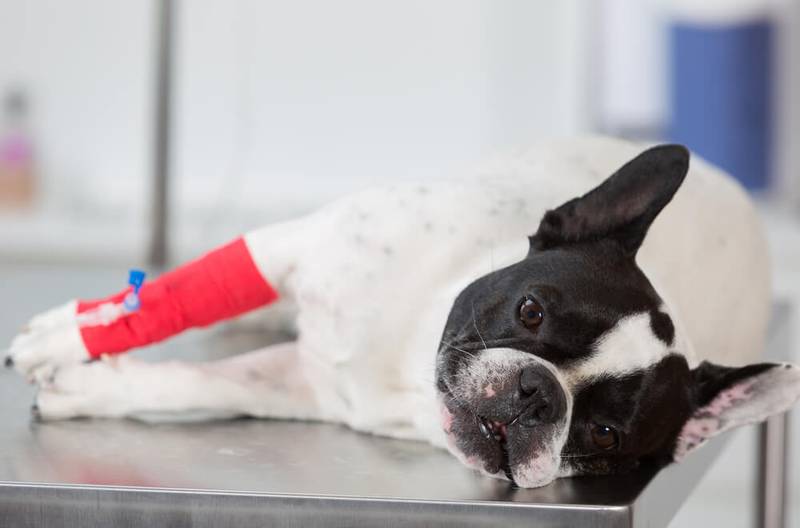
Overweight pets are recommended special low-calorie diets, because it has been proven that excess weight negatively affects the course of the disease. It is important for owners to understand that weight loss is an important component of treatment, weakening the manifestations of the disease, which is not always completely cured.
The basis of long-term treatment are hormonal drugs (glucocorticoids). The initial dosage of the drug can only be determined by a doctor. As the severity of symptoms subsides, the dose and number of doses are gradually reduced over 2-4 months. In most cases, the minimum effective maintenance dose is prescribed for continuous use, however, dose selection is carried out strictly on an individual basis. Unfortunately, it should be borne in mind that long-term use of hormonal drugs can lead to the development of a number of complications. Predisposed animals may develop diabetes mellitus, congestive heart failure, urinary infection, iatrogenic hyperadenocorticism (Cushing’s syndrome). In this regard, patients receiving hormone therapy must undergo regular examinations by a doctor and take blood tests (general and biochemistry) to monitor the development of complications.
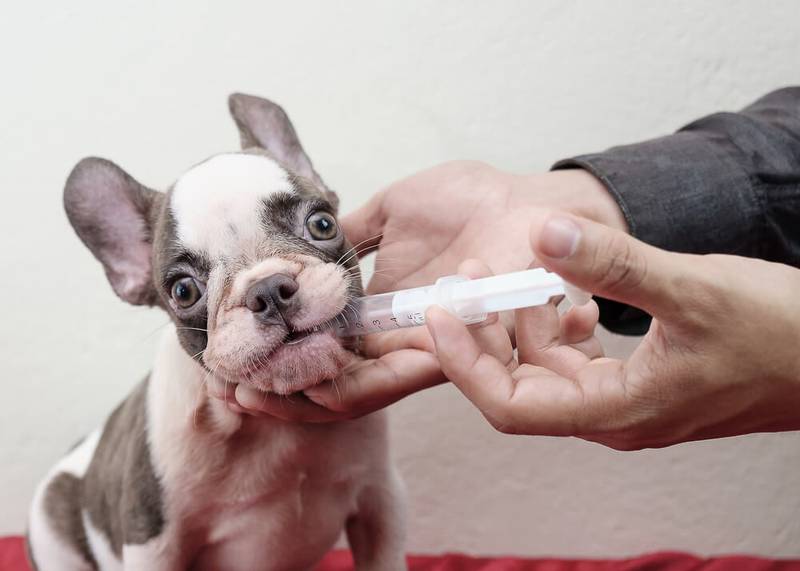
Antibiotics are used in the isolation of microflora from the discharge of the respiratory tract. The course of treatment is 10-14 days in accordance with the results of sputum culture obtained as a result of bronchoscopy, to determine the sensitivity of the microflora. If antimicrobial susceptibility culture is not possible, broad-spectrum antibiotics with high bioavailability and minimal toxicity (eg, synulox) are selected.
Along with hormonal and antibacterial therapy, the doctor may prescribe bronchodilators – that is, drugs that help expand the airways, improve diaphragm mobility, and reduce pressure in the pulmonary tract. As a rule, these drugs are prescribed in the form of inhalations.
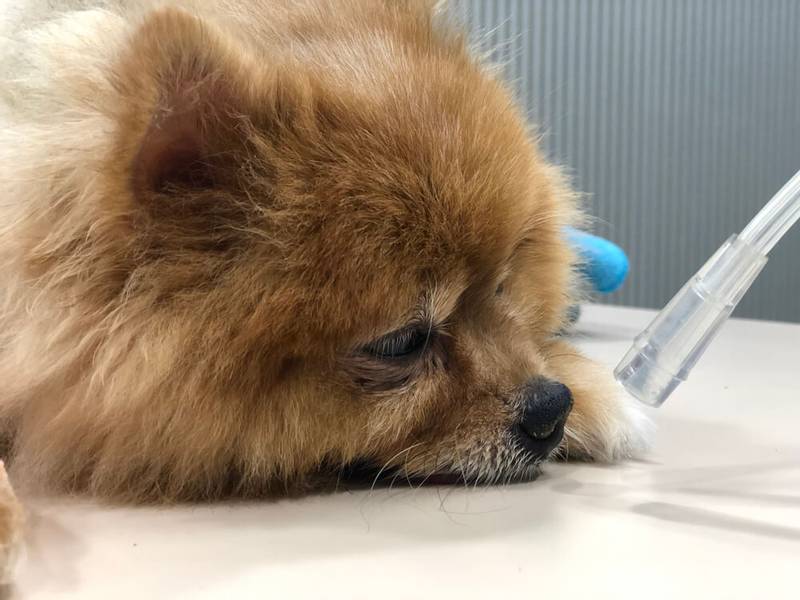
In some cases, in the presence of a prolonged, dry, debilitating cough, antitussive drugs are prescribed.
ramalan
The prognosis for confirmed asthma in a dog depends on the severity of the disease, the severity of the symptoms, the tolerability of treatment, the response to drugs, and the presence of comorbidities.
It is important for the owner to understand that bronchial asthma usually progresses over time and a complete cure rarely occurs (only if the cause of the disease can be identified and eliminated). It is possible to reduce the frequency of attacks, but they cannot be completely eliminated.

Dogs should be assessed every 3-6 months to detect signs of deterioration in a timely manner. As soon as signs of wheezing or other symptoms of respiratory distress occur, the owner should contact a veterinarian.
Tulisan éta sanés panggero pikeun aksi!
Pikeun ulikan nu leuwih lengkep ngeunaan masalah, kami nyarankeun ngahubungan spesialis a.
Tanya dokter hewan
16 September 2020
diropéa: Pébruari 13, 2021




